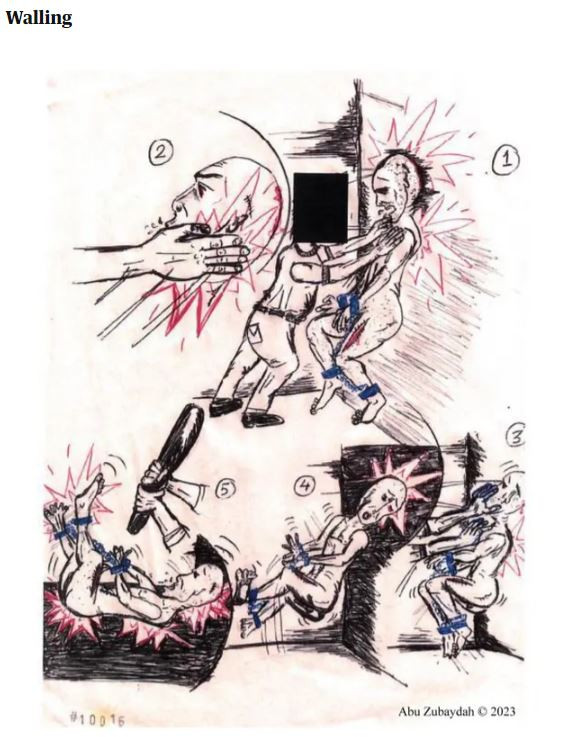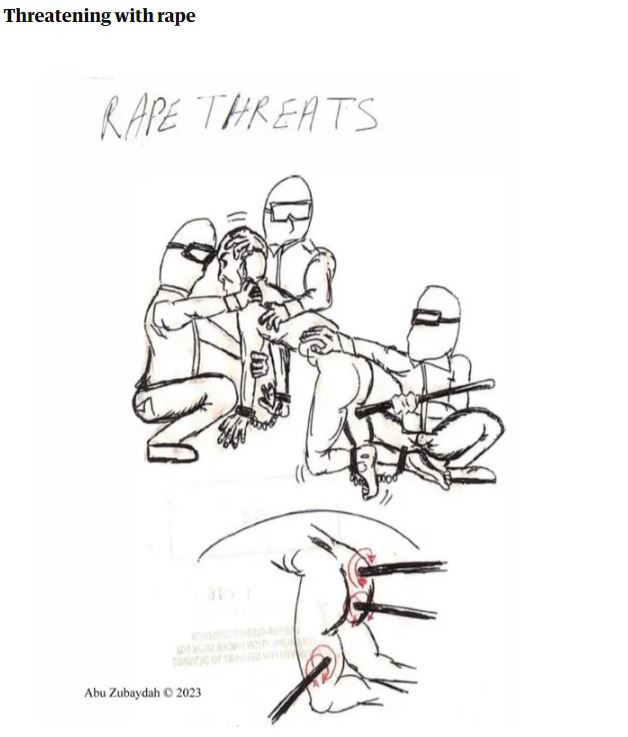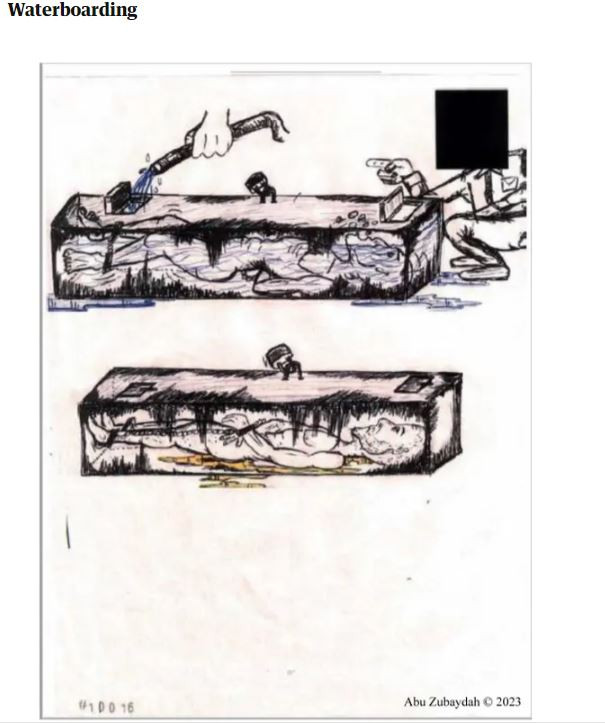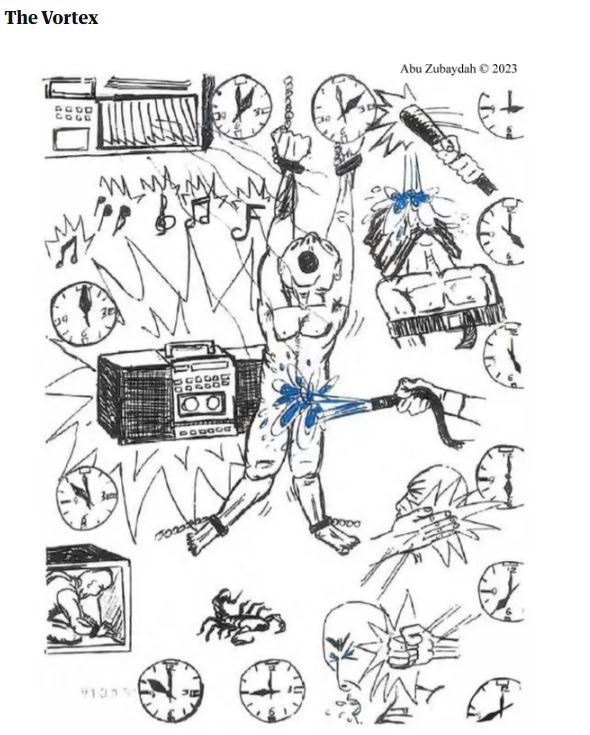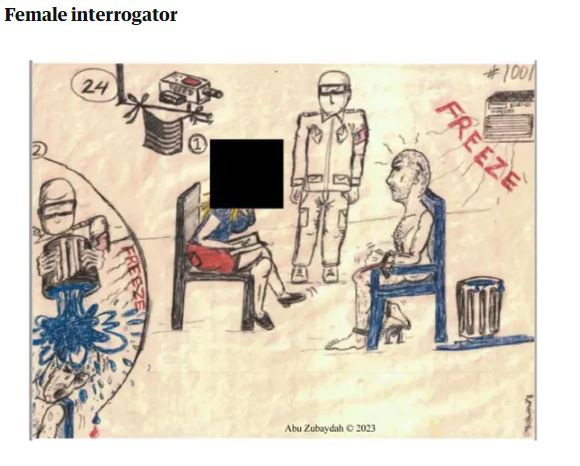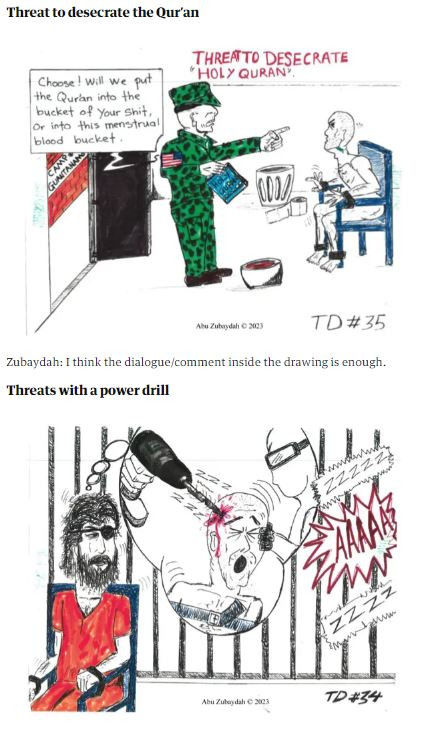The ‘eternal prisoner’ describes torture techniques used by the CIA in the wake of the 9/11 terrorist attacks and how he himself was used as a guinea pig
A series of sketches drawn by Abu Zubaydahknown as the “eternal prisoner“, gives the most complete and detailed description of techniques to date of torture used by the CIA in the wake of the September 11, 2001, terrorist attacks and how he himself was used as a guinea pig in the CIA’s torture program, a newspaper report reveals Guardian.
Zubaida drew a series of 40 sketches chronicling the torture he suffered at a series of CIA dark sites between 2002 and 2006 and at Guantanamo Bay. In the absence of a full official record of the torture program, which the CIA and FBI have for years tried to keep secret, these sketches give a unique and poignant picture of a horrific period in US history, notes the Guardian.
The drawings, which Zubaida describes in his own words, depict appalling acts of violence, sexual and religious humiliation, and practices of prolonged psychological terror perpetrated against him and other prisoners. The sketches were drawn by himself from memory from his cell at Guantanamo and were sent to one of his lawyers, Professor Mark Debo.
Together with his students at the Center for Policy and Research at Seton Hall University School of Law, Debo compiled Zubaida’s sketches and written comments, compiling a report.
The Guardian is publishing for the first time this report entitled: “American Torturers: FBI and CIA Abuses at Dark Sites and Guantánamo”, along with a series of previously unpublished sketches. The sketches, many of which show harsh images, are published in the article.
“Abu Zubaydah is the model for America’s torture program,” Debo said. “He was the first person to be tortured, under the approval of the Department of Justice, based on information that the CIA knew to be false…” he added.
Zubaida is known as the “eternal prisoner” because he has not been charged with any crime, nor has he been offered any prospect of release. Last week, a UN body called for Zubaida’s immediate release, stressing that his continued detention could constitute a crime against humanity.
Zubaida’s sketches provide a unique visual record of the US government’s use of torture in the wake of 9/11. Videotapes of Zubaydah’s torture were filmed by the CIA, but the tapes were later destroyed in violation of a court order, while a 6,700-page torture report by the Senate Intelligence Committee remains classified nearly a decade after it was completed. Although the full Senate report has never been made public, its conclusion is known: the abuse of Zubaida and other detainees failed to elicit new evidence. In other words, torture doesn’t work.
Zubaida, now 52, was captured in Pakistan in March 2002 and handed over to several CIA secret locations in Poland, Lithuania and elsewhere. He was the first victim of what was to become the US’s widespread use of torture against terror suspects. Zubaida was transferred to Guantanamo Bay in 2006, and has been held there ever since.
The US initially claimed he was a top al Qaeda operative, but was forced to admit he wasn’t even a member of the terrorist organization. “Everyone agrees they tortured the wrong guy. They did it anyway so they could get a license to torture other people,” Debo told the Guardian.
Zubaida’s sketches so accurately depict the torture he endured that it led the Seton Hall team to “erase” the faces of CIA and FBI agents to protect their identities. They reveal the extent to which the US government violated international laws and even its own guidelines on what it euphemistically called “enhanced interrogation techniques.”
Among the images published for the first time by the Guardian is one showing masked agents physically threatening Zubaida with anal rape. The detainee also recreates another torture method used by the CIA, known as “Walling,” in which a person’s neck is bound by a collar and then used to slam the person against a wall. In another sketch, Zubaida is chained naked in front of a female interrogator. Another sketch shows guards threatening him with desecrating the Koran – techniques never officially approved by the US Department of Justice.
Zubaida was subjected to mock drowning 83 times. The prisoner records several variations of the technique, including one in which he was placed in a coffin-sized box which was then filled with water up to his nose.
Source :Skai
With a wealth of experience honed over 4+ years in journalism, I bring a seasoned voice to the world of news. Currently, I work as a freelance writer and editor, always seeking new opportunities to tell compelling stories in the field of world news.


